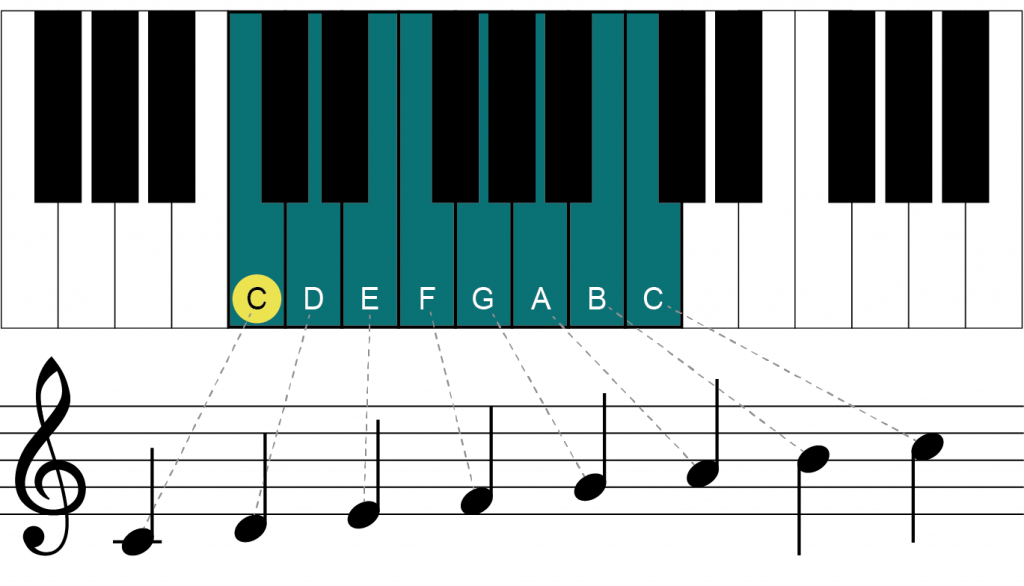3 The Major Scale
The major scale is a series of notes that can be useful to understand while developing our ear training skills. The major scale can be practiced by humming the pitches, singing using note names or a random vowel sound, or using numbers. (Read more about scales in Chapter 8 of Introduction to Music Theory and Rudiments.)

The example above shows C major scale. For ear training purposes, how it appears on the staff is less important than how it sounds.
Take the audio example, and listen to it carefully. How does it sound? What observations can be made as it moves from note to note? While humming or singing random vowel sounds can be useful, using a number system will allow for some added benefit in upcoming modules.
The number system is used by assigning the number 1 to the first note of the major scale (in this case, C) and number 2 to the following note (D), number 3 after that, and so on. Once familiar enough with the sound of the major to hum or sing it without numbers, adding numbers can be a useful next step.
In Chapter 8 of Introduction to Music Theory and Rudiments, the distance between each note is discussed. The distance between the third and fourth notes, and the seventh and eighth notes is smaller than the others. How does this sound? Does it impact your understanding of the scale in any way?
Listen to the audio example above, then use the Record button below to record yourself humming or singing the major scale. Do they sound the same? If not, where and how do they sound different? Once you’ve discovered where they differ, try again and see if you can improve.

